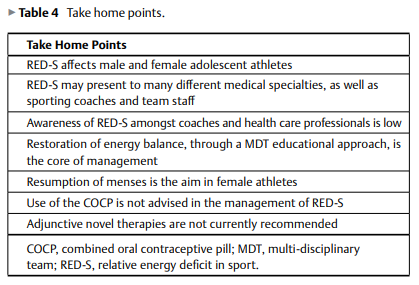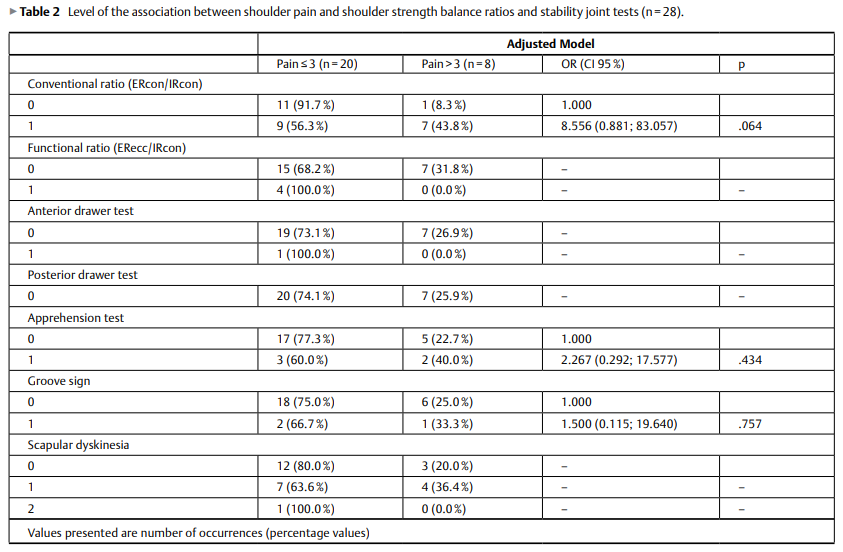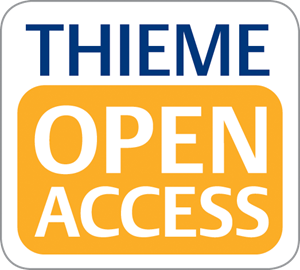
运动医学 ○ 精选论文
International Journal of Sports Medicine
Relative Energy Deficiency in Sport (RED-S) in Adolescents – A Practical Review
Rebecca Jane Gould, Ashley Jane Ridout, Julia L Newton
There are many immediate and longer-term physical, psychological and metabolic benefits of being active during adolescence. These benefits exist when exercise and physical activity are undertaken in a state of energy balance. When exercise occurs in an environment of low energy availability, this is currently termed relative energy deficiency in sport and there are potential significant negative effects on mental well-being, bone, endocrine and metabolic health. Therefore, relative energy deficiency in sport may present to many different specialists or allied health professionals depending upon the symptoms or reasons for seeking help, which include injury, such as bone stress or soft tissue problems, irregular or absent menstruation, stress, anxiety or low mood, or sporting underperformance as examples. The promotion of physical activity in adolescence is a critical part of public health strategy. In parallel with this positive public health message, there needs to be an increase in the awareness of, and education about, relative energy deficiency in sport for those working with and looking after adolescents. This review provides an up to date, practical evidenced based guide on the recognition, investigation and management of relative energy deficiency in sport in the adolescent, both male and female.

International Journal of Sports Medicine
Shoulder Internal Rotator Strength as Risk Factor for Shoulder Pain in Volleyball Players
Claudio Andre Barbosa de Lira, Valentine Zimermann Vargas, Rodrigo Luiz Vancini, Lee Hill, Pantelis Theodoros Nikolaidis, Beat Knechtle, Marília dos Santos Andrade
The aim of this study was to identify the intrinsic factors that could increase risk of shoulder pain in adolescent volleyball players. Twenty-eight young male volleyball players (between 14 and 18 years old) participated in this study. Athletes were submitted to: isokinetic muscle strength assessment of shoulder rotator muscles, ball service speed assessment, anterior and posterior drawer test, apprehension test, groove sign and scapular dyskinesia test. Athletes were followed for 16 weeks to monitor the presence of shoulder pain. All athletes were submitted to the same training protocol. During the 16 weeks, 28.5% of the athletes (n=8) experienced shoulder pain in the dominant limb higher than 3 according to Numerical Rating Scale criteria; 71.5% of the athletes (n=20) did not experience pain, or pain equal or lower than 3. The main result of our study was that the odds of feeling pain higher than 3 was significantly higher among players who presented higher values for internal rotation peak torque (OR=1.113, CI 95%=1.006 to 1.232 and p=0.038). The odds of feeling pain increased by 11% for every N·m of the internal rotator muscles. Pre-season isokinetic rotator strength assessments can help identify adolescent volleyball players at increased risk of a shoulder injury.

Sports Medicine International Open
The Significance of Oral Inflammation in Elite Sports: A Narrative Review
Cordula Leonie Merle, Jan C. Wuestenfeld, Fabian Fenkse, Bernd Wolfarth, Rainer Haak, Gerhard Schmalz, Dirk Ziebolz
Recently, there has been intense discussion about sports dentistry and potential interactions between oral health and athletes’ performance. This narrative review aims to provide a comprehensive overview of the available literature about oral inflammation in sports. For this purpose, it presents the most common types of oral inflammation (gingivitis, periodontitis, pericoronitis, apical periodontitis), and their prevalence in athletes. Both the impact of oral inflammation on performance and causes for oral inflammation in athletes are discussed by presenting current literature. Finally, international recommendations for dental care in sports are presented. Several studies stated a high prevalence of oral inflammation in athletes, especially of gingivitis (58–97%) and periodontitis (41%). Also, many athletes report oral pain (17–30%) and a negative impact of oral health on training (3–9%). Besides this, a systemic impact of oral inflammation is discussed: In periodontitis patients, blood parameters and physical fitness are changed. In athletes, associations between muscle injuries and poor oral health are reported. There are deficits in oral health behavior. Furthermore, systemic changes due to physical stress could influence oral tissues. Overall, complex bidirectional interactions between competitive sports and oral inflammation are possible. Regular dental examinations and prevention strategies should be implemented in sports.

